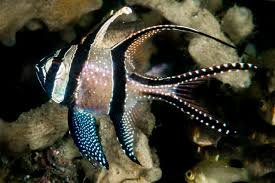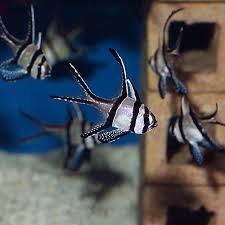
Dragons have long been revered in Chinese culture as symbols of prosperity, power, and harmony with nature. In agrarian societies, where the success of a harvest determined the survival of entire communities, dragons played an essential role in festivals that honored the land and its bounty. These festivals, deeply rooted in tradition, express gratitude to the divine forces believed to govern agriculture, weather, and fertility. The presence of dragons in such celebrations reflects not only their mythological significance but also their deep connection to the rhythms of nature.
The Dragon as a Guardian of Agriculture
In ancient China, people believed that dragons controlled the weather, particularly rain, which was essential for a successful harvest. The Lóng Wáng (Dragon Kings) were thought to reside in rivers, lakes, and seas, governing water sources that sustained agriculture. Farmers prayed to these celestial beings, seeking their blessings for timely rainfall and protection against natural disasters such as droughts and floods.
The Dragon Kings of the Four Seas, each ruling over a cardinal direction, were honored through elaborate ceremonies that included offerings, processions, and theatrical performances. These rituals, often held before the planting season, aimed to ensure agricultural prosperity and avert calamities that could threaten crops.
The Dragon Boat Festival: A Celebration of Water and Agriculture
One of the most famous dragon-related festivals in China is the Dragon Boat Festival (Duanwu Festival), celebrated on the fifth day of the fifth lunar month. While it is widely known for commemorating the poet Qu Yuan, it also has strong ties to agricultural traditions.
In many rural communities, the festival serves as a way to honor the water dragon and seek protection from floods or droughts. The dragon boat races symbolize the dragon’s power over rivers and lakes, reinforcing the belief that dragons bring balance to nature. Participants row vigorously to the rhythmic beat of drums, mimicking the movement of a dragon soaring through water. The collective effort required in the race represents communal strength and the unity needed to ensure a bountiful harvest.
Additionally, families prepare zongzi (sticky rice dumplings wrapped in bamboo leaves) as an offering to the dragon spirits, symbolizing gratitude for the land’s fertility. These customs underscore the festival’s role in reinforcing the relationship between humans, dragons, and the forces of nature.
The Rain-Praying Festival: Appeasing the Dragon for a Good Harvest
In many parts of China, especially in rural regions, communities hold Rain-Praying Festivals to invoke the blessings of the dragon gods. These ceremonies are particularly common in areas that rely on rice farming, where the timely arrival of rain is crucial.
During these festivals, villagers gather at dragon temples or sacred rivers to make offerings, including incense, fruits, and symbolic paper dragons. Some communities even conduct dragon dances, where performers manipulate a long, serpentine dragon figure, mimicking its movements to summon rain. The dance is accompanied by drumming and chanting, creating an atmosphere of reverence and hope.
In times of drought, these rituals become more elaborate, sometimes including dragon processions where a large, intricately crafted dragon figure is carried through the fields. This act is believed to call upon the celestial dragons to release rain and restore balance to the land.
Spring Festival and the Awakening of the Earth Dragon
The Chinese New Year (Spring Festival) is another occasion where dragons take center stage in celebrating the renewal of life and the land. As winter gives way to spring, the festival symbolizes rebirth, growth, and agricultural renewal.
One of the highlights of the Spring Festival is the Dragon Dance, performed to drive away evil spirits and ensure good fortune for the coming year. The dragon, often measuring several meters long, is carried by performers who move in a wave-like motion, representing its mystical power. This dance is believed to awaken the Earth Dragon, signaling the start of the agricultural season.
Firecrackers and fireworks, essential elements of the celebration, are believed to scare away malevolent spirits that could harm the crops. The combination of these elements reflects ancient beliefs in the dragon’s protective role over farming communities.
The Festival of the Great Dragon in South China
In provinces like Guangdong and Fujian, the Festival of the Great Dragon is celebrated to express gratitude for a bountiful harvest. This event, held after the autumn harvest, is marked by dragon parades, feasting, and theatrical performances.
The centerpiece of the festival is the Giant Dragon Procession, where a massive dragon figure—sometimes over 30 meters long—is carried through the village. This dragon is often made of woven bamboo, silk, and bright lanterns, creating a spectacular display at night. The sight of the illuminated dragon weaving through the streets is believed to bring prosperity and ensure continued agricultural success.
Local farmers also participate in thanksgiving rituals, offering grains, fruits, and wine to the dragon deity. These offerings symbolize their gratitude for a successful harvest and their hope for another year of abundance.
The Land and Grain Festival: Honoring the Dragon as a Fertility Symbol
The Land and Grain Festival (She Festival), celebrated in early autumn, is another important event where the dragon plays a significant role. This festival dates back to the Zhou Dynasty (1046–256 BCE) and is dedicated to the Earth God (She Shen) and the Dragon Kings.
During this festival, farmers make ritualistic plowing gestures to symbolize their dependence on the land. In some regions, a dragon effigy made of straw or clay is placed in the center of the fields, signifying the dragon’s role in ensuring fertility and abundance.
Communities also hold banquets featuring dragon-themed dishes, such as dragon-shaped dumplings or fish dishes arranged in the shape of a dragon. These culinary traditions reinforce the connection between the dragon, the land, and the cycle of life.
Modern Celebrations and the Continuing Influence of Dragons
Even in modern China, the role of dragons in agricultural festivals remains strong. While some rural traditions have faded due to urbanization, many dragon-themed celebrations continue to thrive, particularly in regions where farming is still a primary occupation.
In contemporary dragon festivals, elements such as LED-lit dragon parades and drone displays have been introduced, blending ancient traditions with modern technology. Yet, the core symbolism remains unchanged—dragons continue to represent nature’s balance, agricultural success, and the deep spiritual connection between the people and the land.
Conclusion
Dragons have been an integral part of Chinese festivals that honor the land and celebrate agricultural prosperity. Whether through prayers for rain, grand processions, or symbolic dances, the presence of dragons reflects an age-old belief in their power to influence nature. These traditions serve as a reminder of China’s deep respect for the land and the forces that sustain it. Even as society evolves, the legacy of the dragon in these festivals endures, ensuring that future generations continue to honor the ancient bond between humanity, nature, and the celestial dragons.




